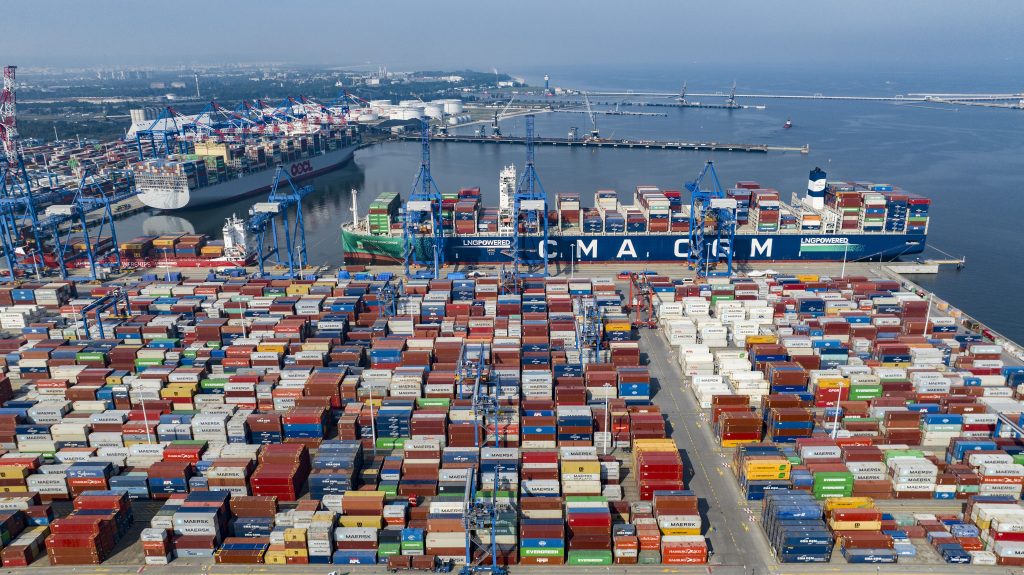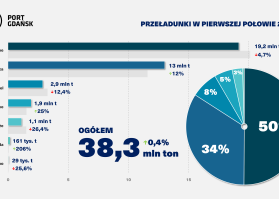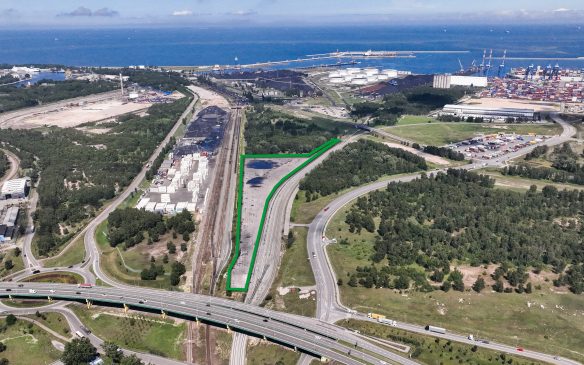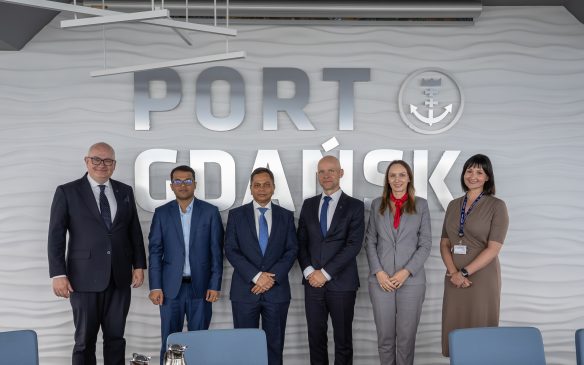Port of Gdańsk maintains its strong position in the first half of 2025

The Port of Gdańsk ended the first half of 2025 with very good results, both in terms of cargo volumes handled and financial results. Over 38.3 million tonnes of cargo passed through the quays, an increase by 0.4% compared to the same period last year. Net sales profitability amounted to 56% and the net profit generated in the first half of the year was PLN 179.6 million, an increase by 40% compared to the same period in 2024.
Liquid fuels continue to account for the largest share in the cargo handling structure, representing 50% of the total volume. The observed decline in domestic demand for energy raw materials due to a milder winter and the current geopolitical situation in the region have reduced the need to accumulate strategic reserves. That said, liquid fuel cargo handling in the Port of Gdańsk was only 4.7% lower than in the same period of 2024. It is mainly handled by Naftoport and reached 19.2 million tonnes after the first six months of 2025.
General cargo came second, with cargo handling increasing by 12% to 13 million tonnes, including a 14% increase in containerised general cargo. This corresponds to approximately 11.6 million tonnes of goods handled.
The increase in the volume of containerised general cargo was significantly influenced by the launch of new shipping connections by Mediterranean Shipping Company (MSC), one of the largest container shipping companies in the world. In the first half of 2025, the Port of Gdańsk became a new place on the map of MSC’s Asian services – Britannia and Albatros, handling regular connections with ports in China, South Korea and Vietnam, to name a few. The inclusion of the Port of Gdańsk in MSC’s global network of connections not only increased the volume of containers handled, but also significantly raised the port’s attractiveness in the eyes of international logistics operators. It is also an important step in strengthening the position of the Port of Gdańsk as a strategic container hub in the Baltic Sea as well as in the Central and Eastern Europe region.
The Port of Gdańsk has been developing dynamically, particularly in the segment of containerised general cargo handling thanks to the expansion of the Baltic Hub Container Terminal (BHCT) – the largest container terminal in the Baltic Sea. Thanks to the launch of the new T3 terminal, BHCT’s cargo handling capacity has increased by as much as 1.5 million TEU (from approx. 3 to 4.5 million TEU).
A high 25% increase was also recorded in the group of other bulk cargo, which reached 1.9 million tonnes. The increase in ore cargo handling was particularly high, up by 206% compared to last year, the largest percentage increase among all cargo groups.
As predicted, smaller cargo handling volumes were recorded for coal, amounting to about 2.9 million tonnes. This is 12.4% less than in the same period last year. Less grain was also handled in the past six months – slightly above 1.1 million tonnes, a decrease by 26%.
The overall result for the first half of 2025 at the Port of Gdańsk is really good. The diverse structure of cargo handling and the dynamic development of the container segment highlight its growing importance on the global maritime logistics map.
‘The Port of Gdańsk continues to build its leading position in the Baltic Sea region in a consistent and pragmatic manner. The dynamic development of the container segment, stable share in fuel cargo handling and growth in the bulk cargo group show that we respond flexibly to changes in the economic, social and geopolitical environment’, said Dorota Pyć, President of the Port of Gdańsk. ‘All this translates into a stable financial situation for the company and confirms that investments in port infrastructure, technologies and new logistics directions bring direct results and help build the current and future resilience of the Port of Gdańsk’.




